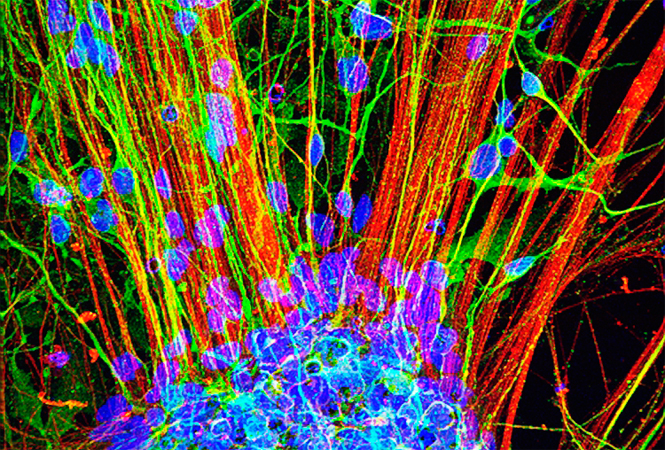Every cell we have, or any cell any species has for that matter, is a differentiated cell-which means that every cell is specific due to its location. Every cell has a particular function. A skin cell is different then a liver cell. Even tough they are different, they contain the same molecule and information-DNA. Ok, so we have our entire DNA genome in every cell, we know that genes are what code for proteins. However, the entire genome is not active in every cell; some genes that are not needed in specific cells are turned off. You would imagine our skin cells would want the genes and thus proteins that make our skin, well skin-like. Our skin cells would not have much use with the genes that our liver uses. During our development, there is a stage where our entire genome is active in each one of our cells, these are called stem cells. Which is a proper name, because they are the stem to which all of our cells are made of. During a process called differentiation, these stem cells are introduced to certain hormones and factors which tell stem cells to turn off specific genes and become a specific cells. So, this is when a hormone might tell a stem cell, “ok, you will now be a brain cell, go ahead and turn off all of the genes that are not brain related…”
or maybe…
the stem cell is told to become a gamete (sperm or egg cell).
So,
If we know that every cell started off as a stem cell and they were then introduced to some ingredients and then they became a specific (or differentiated) cell-then…
…Can we introduce some ingredients to a cell to reverse that process for it to become a stem cell again?
Yes we can, as proven by Shinya Yamanaka in Kyoto, Japan…and these are called induced pluripotent stem cells (iPS cells)
Induced, meaning something caused something to happen (hormones and factors induced the cell to become a iPS)
Pluripotent, meaning many (pluri-) powers (potent) – so the cell contains many powers, not just the specific powers of a differentiated cell
But….
Why are iPS cells important?
Yamanaka received a nobel peace price for his findings, so this must be important. And it is. Very Important. This gives scientists the ability to reprogram cells to be whatever cell it needs to be. People will not need to rely on transplants, they would be able to regenerate their own cells, with their own DNA. Theoretically, they would be able to donate their own skin cells to their liver. This is a fairly new field, as Yamanaka published his work in 2006, so the exact capabilities of iPS cells is slightly unknown, but our imagination is running wild. I assure you scientists are buzzing away as you read this trying to figure out the entire boundaries of this new-found science. Much like how a dog might test out where he can go with his new electric collar or how a child will test a new teacher to see what they can get away with.
Why is this useful to De-Extinction?
Well, if an animal is extinct, it is safe to assume we cannot get that animal to lend us any living gametes. But, we could get tissue cells from the species and perhaps turn those tissues into iPS cells and then program those iPS cells to be usable gametes. Consider, we have frozen zoos containing a vast amount of cells and tissues, we are able to fill-in holes in aDNA to obtain viable DNA of extinct species, and now we are able to convert this DNA into sperm and eggs…
as hey might say in Seinfeld, “yada-yada-yada”
an animal is born.
